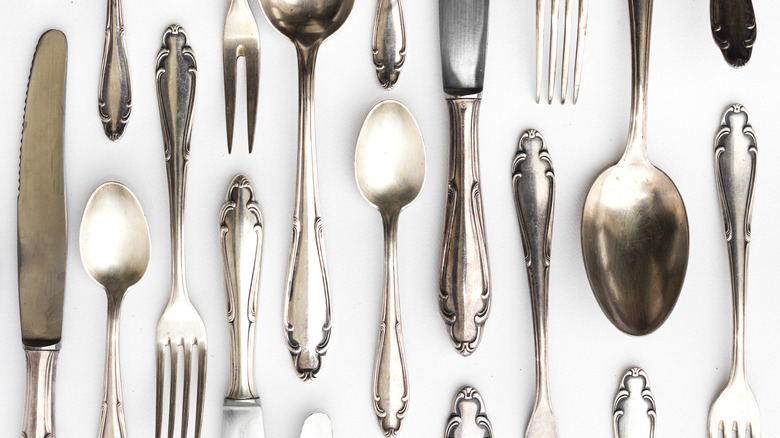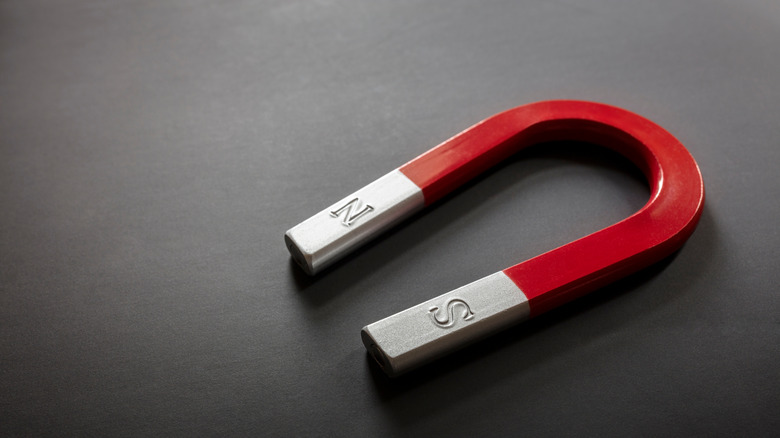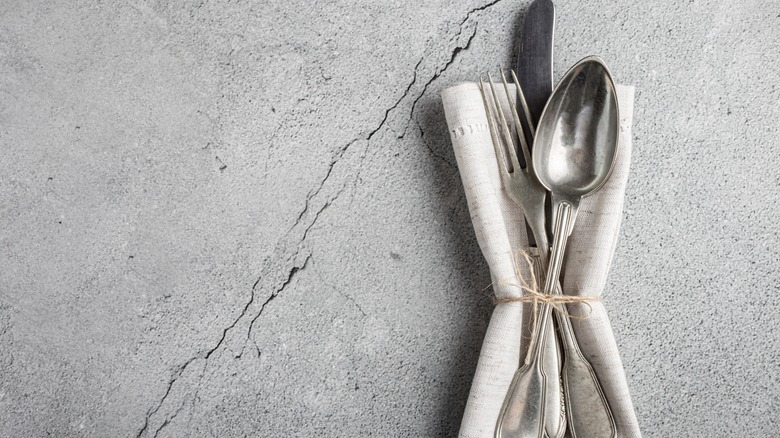Is Your Silverware Real Silver? Here's How To Tell
Knowing the difference between real silverware and that which is simply silver-plated or stainless steel matters for a few reasons. First, if you're estimating the value of your collection, it's important to know exactly what it's made of. It also matters when it comes to cleaning — if you're cleaning silver-plated flatware like it's the real thing, it may tarnish or chip.
To the untrained eye the distinction isn't that easy to see. Luckily, we don't need to rely on visuals alone; there are a variety of tests to determine if your silverware is real silver or not. One of these is as simple as a buffing test. Grab a soft, white or light colored cloth and give your silverware a firm buffing. If you're working with real silver, there will be a very distinct black mark on the fabric.This is the tarnish, also known as patina, rubbing off of the silver. If it's a stainless steel coating, though, you won't see anything on the cloth aside from surface dirt or dust. Either way, as a bonus, you'll have nice and shiny flatware!
Magnets or ice cubes
Buffing isn't the only easy test for determining if your flatware or cutlery is real silver. Another way to distinguish the two is with magnets. Silver itself is paramagnetic, meaning only a little, but the metal used underneath silver plating likely will be truly magnetic. The simple version of this test is to try and stick the item in question to a magnet. However, not all fake silver is magnetic. A more accurate test is to slide a magnet down the item. The magnet will slowly slide down, then drop off, the real silver. On fake silver, it will either immediately slide down or stay firmly attached.
If you don't have a magnet on hand, you could also run a test using ice cubes. Real silver conducts thermal energy much more efficiently than silver plating and the metals underneath, so if you want to quickly determine what's real and what's fake, place the silver item on top of an ice cube. Real silver will melt the ice much quicker than fake. Ideally, you have something you know is real silver to which you can compare the questionable item.
Other tests
Another, perhaps more accurate way to verify real silver is with silver test acid, which can be found in testing kits like this one from PuriTEST on Amazon for $23. Each testing acid will be slightly different, but the basic principle is the same. You pour a bit of the acid on the potentially silver item and the kit will tell you what color the acid will turn if it's real silver. If it's anything but that color, it's fake.
If you don't want to pour acid directly onto your forks and spoons, the kit comes with a testing stone. For this, you rub the item onto the stone, then test the acid on the stone. When handling this, be careful that you don't get it on your skin or in your eyes. Finally, look for a marker that indicates whether it's real silver or silver-plated nickel or another metal. Real silver can have a few labels, including 92.5% or 925, which indicate the item is made of that much pure silver. The letters "STER" also mean it's real, as in sterling silver.


